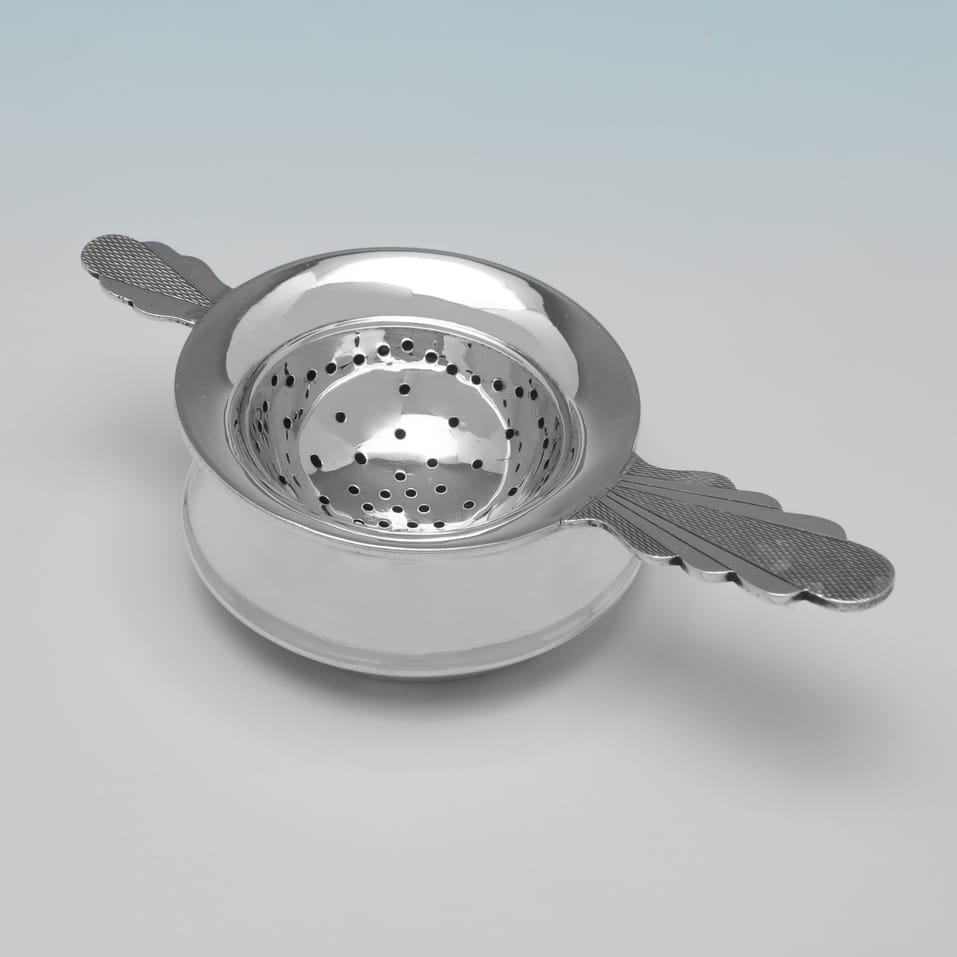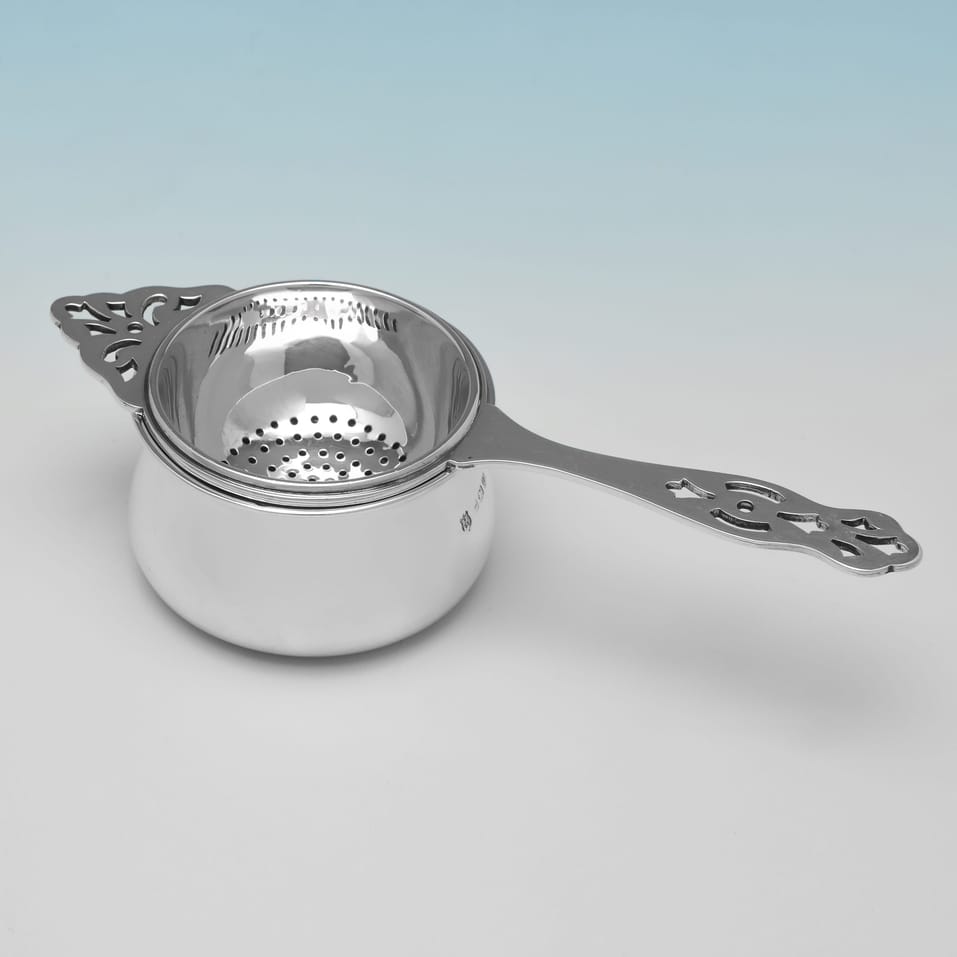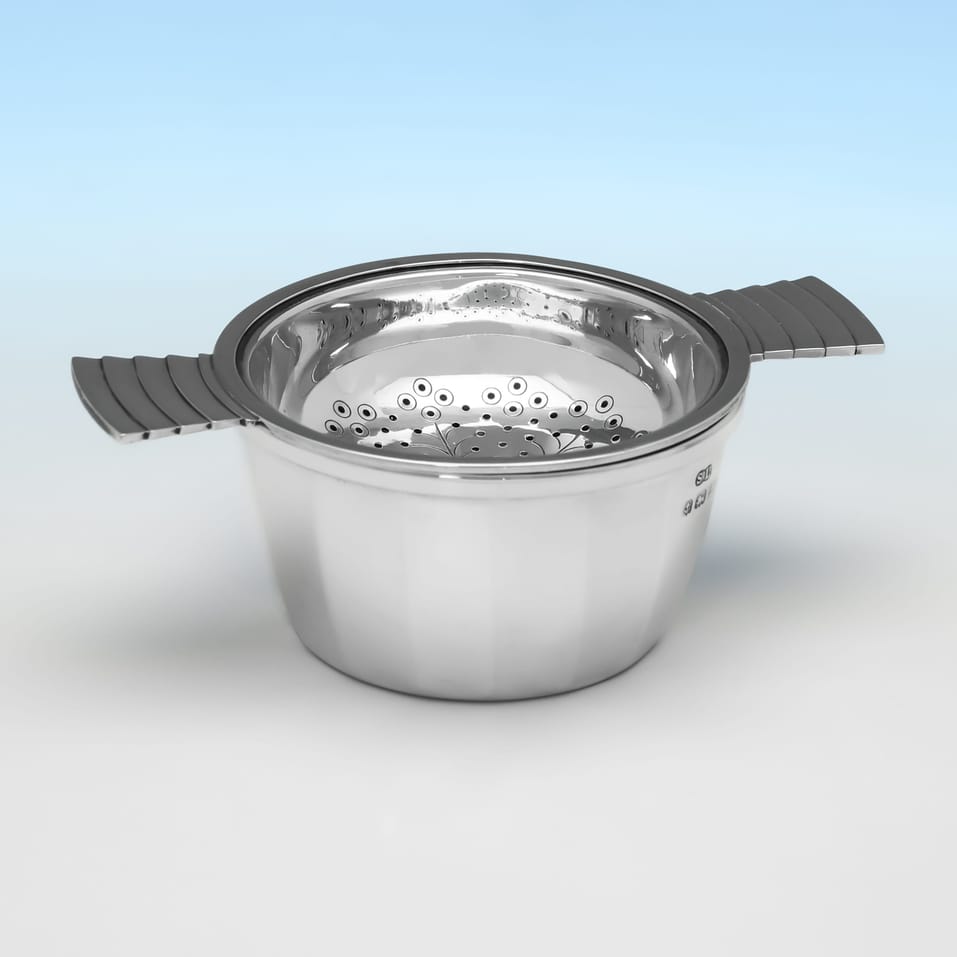Antique Silver Tea Strainers
Silver tea stainers started being produced in England towards the latter part of the 19th century, becoming more common during the 20th century with the increase in popularity, and availability, of tea. The introduction of tea bags c.1908 made them less utilised items, however tea purists still insist on loose leaf tea poured through a tea strainer to provide the best tea drinking experience. Examples in the Art Deco and Modernist designs are highly sought after
3 results
L7729 : Sterling Silver Tea Strainer
Hallmarked In 1948
Hallmarked in Birmingham in 1948 by Sanders & Mackenzie, this stylish, George VI period, Sterling Silver Tea Strainer, is in the art deco taste. The tea strainer measures 1.25"(3cm) tall, by 4.75"(12cm) wide, by 2.5"(6.5cm) deep, and weighs 1.64 troy ounces.
£425
L7678 : Sterling Silver Tea Strainer
Hallmarked In 1938
Hallmarked in Birmingham in 1938 by Barker Brothers Ltd., this George VI period, Sterling Silver Tea Strainer, features pierced detailing to the strainer, and a pain bowl. The tea strainer measures 1.5"(3.5cm) tall, by 6"(15cm) wide, by 2.5"(6cm) deep, and weighs 2.43 troy ounces.
£445
L8015 : Sterling Silver Tea Strainer
Hallmarked In 1935
Hallmarked in Birmingham in 1935 by William Suckling Ltd., this stylish, George V period, Sterling Silver Tea Strainer, is in the art deco taste, with stepped detailing to the handles, and a panelled bowl. The tea strainer measures 1.5"(4cm) tall, by 4.25"(11cm) wide, by 2.75"(7cm) in diameter and weighs 2.77 troy ounces.
£595


